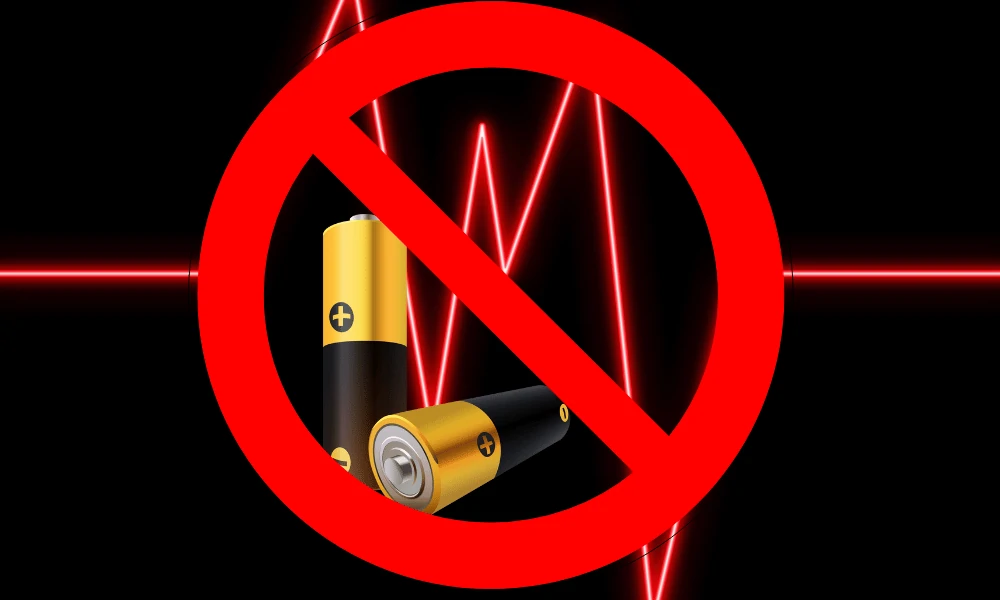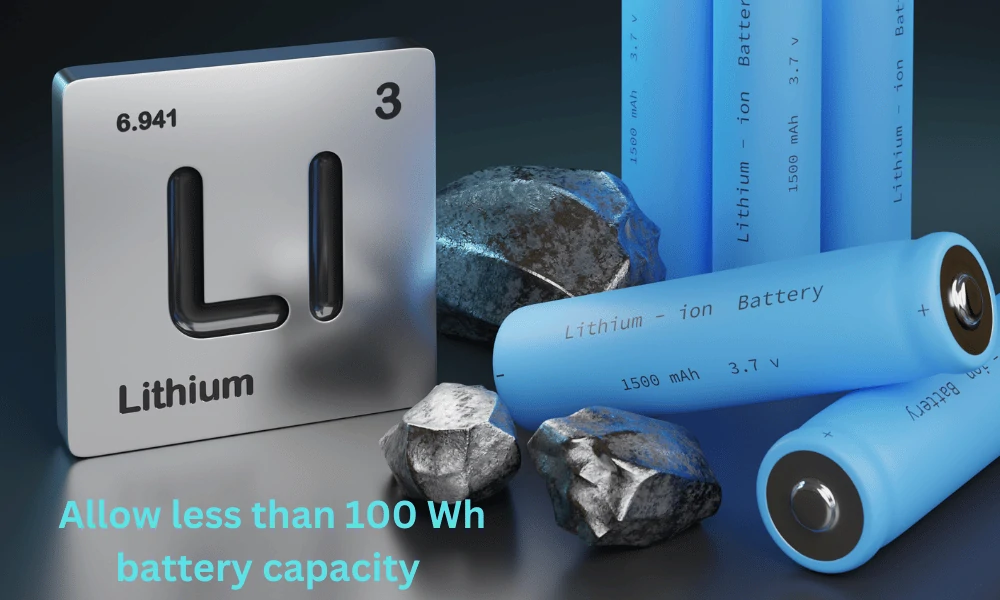I am an absolute nature lover and always try to reduce my environmental impact. Therefore, I prefer to use most of my devices that are compatible with solar power to reduce my carbon footprint.
As a frequent flyer, one day I carried my portable solar lights with me on a flight. But, to my surprise, they advised me to put my solar lights on the luggage.
After that incident, I decided to find out the reason for it and any other options available for bringing solar lights on a flight.
Are solar lights allowed on aeroplanes?
Yes, you can carry your solar lights on flights, but they must be “ passive solar lights”. The passive means the devices do not emit radio waves or are without batteries.
For example, you can carry on your solar-powered outdoor lights, solar-power portable phone chargers, and solar-powered flashlights but they should not contain a heavy battery or high-end communicating electronic components.
Solar lights (Lithium-ion batteries) with less than 100 watt hours of battery capacity are allowed on the flights.
If your solar lights have larger capacity batteries for complex circuits with radio wave communication capabilities, then you can carry them in the luggage.

Always remember, It’s safer to check with your airline for their specific rules and regulations on electronic devices and their watt-hours. That is more comfortable for the safety of both parties.
Why you can’t take solar lights on flights?
The most important reason is the safety concern because solar lights like electronic devices can have a safety risk if they are not used properly.
The built-in batteries in your solar lights pose a fire risk if that not charged or store properly. Because those batteries sometimes may short circuit or overheat and source for fire.
Electronic devices such as solar lights sometimes work improperly and may lead to interference with communication or navigation systems on the aircraft.
Sometimes your solar lights are not safely stored, then they can lose and fly around in-flight turbulence. This can cause serious damage to the crew and passengers.
Therefore you need to ensure the safe storage of your electronic devices including solar lights as well.
What are the rules and regulations placed on solar lights carried on planes?
The Federal Aviation Administration (FAA) and individual airlines oppose the rules and regulations on personal electronic devices such as solar lights carry on flights.
The FAA does not prohibit the carrying of personal electronic devices with batteries that do not interfere with the communication or navigation processes on the aircraft.
But they can be allowed to bring them on carry-on or checked baggage.
They specifically mentioned Personal electronic devices with lithium-ion batteries (Checked baggage) must be totally switched off to avoid unintentional activation or damage
Furthermore, FAA opposes the rule you can bring less than 100-watt-hour lithium-ion batteries with you. This rule complies with electronic devices including solar lights that contain Li-ion batteries.
But some airlines oppose specific rules and regulations on personal electronic devices, therefore before flying you need to take into account restrictions on electronic devices such as solar lights.
For example, American Airlines mentioned that devices with batteries in checked -items of baggage are removed and drop them into the carry-on in separate plastic bags.
FAA released a novel policy emphasizing that airlines can expand the use of portable electronic devices during all phases of flight.

American Airlines stated that they have permission only for Lithium-ion batteries less than 100 Wh (4 spares in a carry-on bag), 100-160 Wh (2 spares in a carry-on bag), and 160-300Wh(Contact Special Assistance)
British Airways stated that the electronic devices (battery-powered) for personal use are packed to avoid accidental activation.
The spare batteries need to place in their original casing (if possible) or else keep in a protective case or strong plastic bag. Otherwise need to place electrical tape over the battery terminals.
United Airlines stated that travelers can use permitted small and lightweight portable electronic devices the “non-cellular transmitting mode” or else “Flight mode” during the flight.
The devices comprise Lithium-ion batteries (solar lights) which may be less than 100 watt-hours capacity.
Qantas airways mentioned that personal electronic devices (Solar lights) with Lithium-ion batteries must not exceed 100 Wh.
Furthermore, devices packed in checked luggage they must be completely switched off and not in sleep mode.
How to safely bring your solar lights on a flight?

1 STEP – Check your airline:
You should need to check your airline before your flight. Because individual airways oppose several rules and regulations on electronic devices including solar lights.
They mentioned each of the devices’ size, weight, types of batteries allow, and watt-hours restrictions. According to that, you can decide how to bring your solar lights on the flight.
2 STEP – Pack securely:
Now, you can safely pack solar lights in your luggage. Be careful your baggage is well secured to prevent damage to your solar lights and avoid loose during flying. Bubble wraps or foam-like packing material are suitable for avoiding projectiles.
3 STEP – Switch off or take off batteries:
Before boarding the plane you need to make sure your solar lights are switched off or remove the batteries. That will ensure accidentally turn on your solar lights on the flight.
4 STEP – Solar lights are placed in checked luggage:
You need to insert the solar lights into the checked luggage without bringing them on board. That will make sure your solar lights are securely stored during flying.
5 SETP – Label your bag:
You can label the bag which is containing solar lights. Because they can easily be fragile and you need to notify them for safe handling of the baggage.
6 STEP – Follow the instructions:
You should need to adhere the advice given by the cabin crew members regarding the electronic devices used including solar lights in the flight.
7 STEP – Reuse your devices:
After reaching your destination you can normally use your devices such as solar lights.
You can follow up these simple steps to safely carry your solar lights with you.
What kind of solar lights are allowed on flights?
The Federal Aviation Administration (FAA) did not issue any specific instructions for mentioning solar lights.
But solar lights also come under portable electronic devices or personal electronic devices (PED) therefore current rules and regulations also comply with solar lights.
According to current policies, solar lights may be lightweight, portable, and small-scale and do not pose any safety or fire hazard during the flight.
Moreover, it’s better to check with your airline provider or the country you want to travel to for more information on rules and regulations as opposed to solar lights.
Because the respective airlines issued their policies on the use of electronic devices on flights.
You can visit their official websites or talk to their hotline for more details.
Considering current rules and regulations we can generally conclude following portable types of solar lights will be allowed in airlines.
- Solar-powered flashlights
- Solar-powered keychain lights
- Solar-powered portable lanterns
Why we can’t use solar lights during takeoff and landing on planes?
When aircraft takeoffs and landings are very critical situations for pilots. Because aircraft navigation and communication systems mainly depend on various kinds of signals, such as radio and radar transmissions to pinpoint an aircraft’s location and trajectory.
The use of personal electronic devices during takeoffs and landings can interfere with those signals and have the potential to jeopardize the safety of the flight.
Especially, solar lights can cause safety hazards during these situations because of turbulence.
At that times plane experience more movements and those items are not safely stored which can cause projectiles.
Furthermore, the illumination of solar lights may be distracting for the pilot during critical situations on the flight.
As well as during this situation the aircraft is at a high risk of danger because of accelerating to reach high speed or deaccelerating to land.
Therefore pilots need much attention for system checks and other activities during this situation without any distractions.
Hence FAA and other aviation services opposed rules that restrict the use of personal electronic devices during takeoffs and landings to mitigate risk interference with aircraft.
But later news emphasized FAA stated that they allege the current rules on use of PDE usage during takeoff and landings.
What is the risk of solar lights powered with Lithium-ion batteries during the flight?

The lithium-ion batteries powered solar lights have a risk of fire and explosion hazards because of overheating and damage.
If you are unable to properly store or use these batteries cause a fire hazard. Because batteries are highly prone to high temperatures and physical effects.
Therefore it’s compulsory to follow proper transportation practices by air. This includes turning off solar lights during flight, preventing overcharging the battery, and proper handling of batteries.
The most important thing is you need to check out the airline provider and airport before your flight for more details.
It’s your responsibility to be proactive and take the necessary actions to reduce the risk of incidents during air travel.
Final Thoughts
The utilization of solar lights in aircraft is controlled by the airline with opposing safety rules and regulations. Therefore it’s better to you have to make sure your respective airline provider and the country you’re flying to for their rules and regulations for solar lights.

Eng. Matthew Joseph Nandirio is the Founder of walkingsolar.
After graduating from the University of Houston in 2002, matt started working as a Solar Electrical Engineer for several multi-national solar energy companies.
He has a wide range of experiences including solar system requirement analysis, planning, maintaining, debugging and even solar device development through research.
He now shares his 20 years of expertise through his articles on the walkingsolar website.
Further, he is also the author of two books on Solar Technology, “Solar Power for Villages” and “DIY Solar System for Dummies”.

